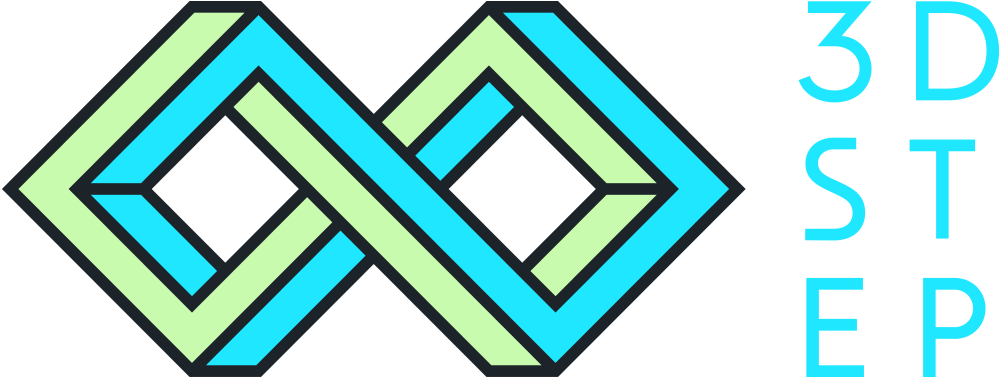Surface treatment specialist Mirka values speed, cost-effectiveness and meticulous finishing in 3D printing
Mirka manufactures world-class solutions for surface treatment and precision grinding.
Mirka is a highly export-driven company, providing high-quality surface treatment and precision grinding solutions. From its production plants in Jepua, Oravais, Karjaa and Pietarsaari, it exports grinding and polishing products and machines to more than 100 countries. Mirka works with 3DStep on a wide range of 3D prints, and for Mirka the key benefits of the partnership include speed, cost-efficiency and meticulous finishing. Mirka plans to make greater use of 3D printing in the future, as the company sees industrial 3D printing developing very rapidly right now.
Mirka Oy, based on the plains of Ostrobothnia, is a globally growing company with as much as 97% of its production exported. Mirka's customised systems and commercial solutions are based on a wide range of high-quality abrasive and polishing products and innovatively designed machines. The company's business vision is to provide world-class solutions for surface finishing and precision grinding.
Development Engineer Christian Lindell and Production Implementation Engineer Johan Nyman work in Mirka's Power Tools product development department and both use 3D printing as part of their daily work. Lindell is responsible for the mechanical development of Mirka's products, with a strong focus on robotic applications of the products. Nyman is responsible for the practical implementation of production.
Mirka's common goal is - in all simplicity - to produce the best products on the market.
For our customers, the quality of our products is the most important thing. Another key aspect of our business is our efficient spare parts, maintenance and other after-sales services," says Johan Nyman.
3D printed prototypes and finished products
Mirka, part of the domestic, family-owned KWH Group, has been working with 3DStep since 2017 on 3D printing and product development. Through the partnership, Mirka has sourced prototypes of new products as well as metal and plastic parts for sale. The materials used in the prints include aluminium, polyamide and glass-reinforced polyamide.
One concrete example of a jointly developed product is an aluminium Y-branch component, which previously faced the challenge of high manufacturing costs. As a result of joint development work between Mirka, 3DStep and Etteplan, the components can now be produced at a significantly lower cost in 3D printed form.
We have found that batch size is an important factor when choosing a manufacturing method. For example, we need about 100 of these aluminium Y-branch components per year, and additive manufacturing is a good and cost-effective option for this purpose," says Christian Lindell.
The 3D printed aluminium Y-branch component is the result of a joint development between Mirka, 3DStep and Etteplan.
For Mirka, problem-solving ability, personal contact, direct and honest communication and high-quality end products are important in a 3D printing partner. Special emphasis is also placed on the finishing and uniformity of the final products. This ensures that the products are in line with Mirka's motto: "Dedicated to the finish".
It is important for customer deliveries that the quality is also consistent in terms of external finish and that there are no multiple product units in the deliveries. I find myself tending to order more and more products from 3DStep because they consistently deliver products with the same colour and finish," says Lindell.
When designing new products and developing existing ones, speed is an advantage. When a new prototype can be seen and handled quickly, further development is smoother. Mirka says 3D printing also places fewer constraints on the designer compared to traditional manufacturing methods.
When designing 3D-printed products, you can focus more on what you really want from a model. In some cases, a combination of lightness and durability is important, in others the emphasis is more on cost-effectiveness," says Lindell.
AIROS650CV grinder using 3D printed aluminium components
At Mirka, we see 3D printing developing at a really fast pace right now. New methods and materials are constantly becoming available, and prices are also constantly evolving. Mirka plans to make more and more use of this manufacturing method in the future and to expand the range of materials used.
Ordering 3D prints is a convenient and straightforward process. In short, 3D printing is easy, cost-effective and fast for us. In the design process, a difference of a few days in delivery time makes a big difference," says Nyman.
Mirka's high quality standards apply both to its own business operations and to the products and environment it supplies to its customers. At Mirkla, staff are constantly encouraged to question traditional solutions and to use creative thinking to develop unique solutions that deliver clear added value to customers. In this, their goals and values are also aligned with those of 3DStep.
The dialogue with 3DStep works well and we also get tips and ideas from them for our own development work. I am not in the habit of giving an A grade, because there is always room for improvement. But 3DStep comes pretty close," says Lindell.



